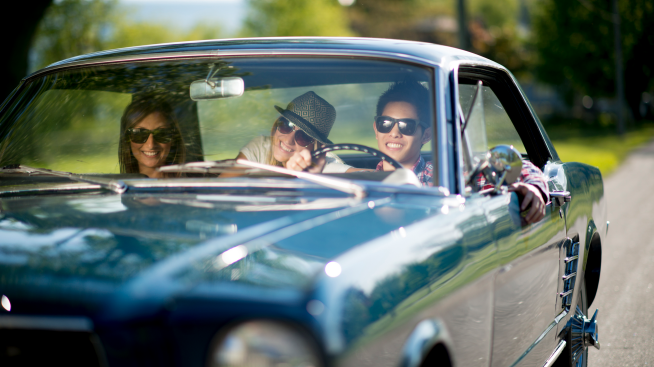8 best tips for buying a used car

Buying a used car can be a tricky experience to navigate. You never know exactly how it’ll work out or what you’re going to end up with. But there are several tips for buying a used car that you can follow to improve your chances of success. Here are some of the tried-and-true steps to make both the search and outcome better.
1. Start with your lifestyle
How you live will likely inform what kind of car you’d buy. Your lifestyle is an important factor in exploring your next used car purchase. For example: Are you single or do you have a big family? Do you make short local trips, or do you enjoy a lot of long road trips? Do you live in the city, suburbs or country?
Similarly, what is your driving style? Do you like the handling of a sports car? Do you like the space, stability and luxury afforded by an SUV? Or are you happy with an all-purpose sedan? Once you have these questions answered you can move to the next step.
2. Consider your budget
It’s the $1,000,000 question. Or maybe more like the $10,000 question. Either way, budget is a major consideration when buying a used car. That goes for both the total cost of the car and how much you’re willing and able to pay on a loan per month.
A helpful way to determine what your used car payments may be is to work backwards. Add up your monthly expenses that already exist and subtract that from your monthly “take home” salary. Then subtract the amount you might normally spend each month on shopping, eating out, entertainment and other incidental expenses. The number you come up with might be a used car payment you’re comfortable with, but be sure to leave some wiggle room for insurance, gas and other costs that come with being a car owner.
Since used cars usually cost less than new ones, you may be able to get a shorter loan term with lower payments. But you may be paying more down the road to fix up a used car, whereas a new car would likely have less wear and tear to keep up with.
How old is the car?
Budget and age of the car often go hand in hand. The older the model, the less it will cost, in general (vintage and classic cars are a different story for another time). Unfortunately, a car isn’t like a fine wine, it doesn’t get better with time. As a car ages, parts wear and lead to breakdowns or replacements.
According to Consumer Reports, the first trouble spots are usually the suspension, brakes and other equipment. Your car’s suspension is the shock absorption system that keeps your car steady on and off the road. Other equipment includes things like automatic transmissions, power steering, the alarm system, interior and exterior lights, windshield wipers, tire pressure, keyless entry, tire pressure monitor and more.
How many miles does the car have?
Similar to the age of the car, mileage is a factor that affects the cost of the car. The more miles, the less the car will generally cost. Of course, there are tradeoffs here. A car with more miles will often need more repairs and replacement parts. You’ll want to find a used car with potentially low mileage if you plan on driving long distances or keeping the car for an extended period.
3. Decide if you’re buying from a dealer or a private seller
Next up, you want to understand the tradeoffs when buying from a dealer vs. a private seller. A private seller is an individual, instead of a business that buys and sells cars. You can always try to negotiate with both dealers and private sellers, but dealers may have overhead and other business costs that may limit their ability to negotiate price.
Keep in mind that some lenders offer financing for private sales, but it may be harder to find than if you’re buying from a dealer.
A note on used car warranties
New cars usually come with manufacturer warranties. This is your car manufacturer’s promise to cover certain repairs if anything goes wrong before a certain period of time or miles.
When buying a used car, the manufacturer's warranty may have expired. Check with the seller — if it’s expired, you can try contacting the manufacturer to see if an extended warranty is available and for how much. If there isn’t an extension available, it’s too expensive or doesn’t seem worthwhile, you’ll be on your own when repairs are needed.
4. Vehicle history
Once you focus on a few car candidates, you’ll want to do your due diligence with a background check. There are several services that can provide authoritative reports on almost any car. Some of the big issues to watch out for in a vehicle history report: accidents, water damage, missing repair history and failed inspections.
5. Get prequalified for financing
As you shop for financing, it may help to get prequalified before you make an offer. This step can give you an idea of where your credit stands, how much you may be approved for, and can help expedite the process.
6. Take it on a test drive
This may be obvious to most, but it’s worth repeating. Take the car on a test drive! First, you’ll find out if it “feels right.” Second, you’ll be able to identify basic concerns like worn brakes, clunky acceleration or odd noises. Try to drive it on roads that mimic your daily habits. Buying a car without a test drive is like buying a pair of shoes without trying them on for size — you don’t know if it’ll be a right fit.
7. Pick one and negotiate!
Once you’ve landed on a used car, you may want to make a counteroffer against the asking price. Where to start? There are a lot of online resources available to estimate the fair cost of most used car models based on multiple criteria including year, miles and general condition. Keep that number firmly in mind and use the low end of the range to help come to an agreement.
8. Apply for your loan
Before going to the dealer, you can apply for your loan online with some lenders. You’ll likely need the details of the car you’re purchasing, where your dealership is located, the financing amount and the terms that you prequalified for if they still apply. You’ll also need to provide personal information like your residence, income and employment status.
Your lender will look into your credit history and other factors that may affect your eligibility for credit. If you’re approved, visit your dealership with the terms in hand and close on your new preloved car.
Make sure you’ve properly budgeted, researched and vetted your options. Now that you’re equipped with savvy used car knowledge, you’re ready to hit the market.
So what do you think?
With these tips for buying a used car, you’re prepared to start shopping for real. Just take it one step at a time and before you know it, you’ll have a (new to you) used car in your driveway that will be a real keeper.



